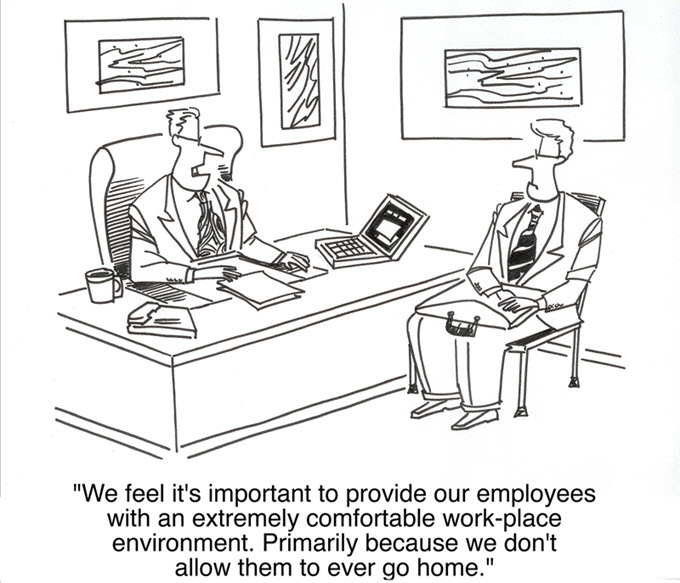 Figure Your Hourly Wage After Work Expenses
Figure Your Hourly Wage After Work Expenses

This calculator can give you true insight into how much money you’re really making and whether or not you’re being taken advantage of. First enter your take home pay per pay period and the number of pay periods per year. Then enter the number of workdays per pay period, number of paid hours per workday, minutes of unpaid breaks per workday, minutes of work-related commute per workday, and minutes spent getting ready for work per day.
Follow this up with any additional, unreimbursed work-related expenses. This would include things like car mileage, union dues, and clothing expenses.
Once you’ve entered the pertinent information into the fields provided, click on CALCULATE. You’ll see your true monthly take home pay, your monthly work-related expenses, your monthly net-profit, your total monthly work-related hours, and your true hourly wage. So the question is, are you getting paid enough?
If you’d like, you can also see how long it will take to pay for a particular expenditure. Say that you’d like to buy a new television for $1000. Enter that dollar amount in the provided field and press CALCULATE. Using the information you’ve already provided, you’ll see the number of work-hours it would take to pay for this purchase.
Today's Savings Rates
The following table shows current rates for savings accounts, interst bearing checking accounts, CDs, and money market accounts. Use the filters at the top to set your initial deposit amount and your selected products.
Working for a Living: How Much Are You Really Making?

You love your job, and you work hard to earn every dollar. Have you ever wondered how much of the money you allegedly make actually reaches your bank account each week? The answer may surprise and frustrate you.
Understanding your net income after expenses is an important part of balancing your monthly budget while planning for your financial future. Here is a list of the invisible costs of working away from home and a suggestion about how to calculate your total expenses.
The Cost of Going to Work
In a perfect world, you would work from home and be wildly overpaid. In the real world, you probably live paycheck to paycheck like the majority of Americans. Also, your paychecks are less than you believe you make, because going to work each day isn't free.
Consider the unavoidable expenses you incur commuting each day. Odds are you either drive to work or utilize public transportation. In the latter scenario, it's easy to calculate your monthly cost. Thirty-day passes are available in most metropolitan areas, and the cost of these varies. In Chicago, the cost is only $86 while a New York City resident must pay $112. A rough average of the two is $100 monthly simply for public transportation access.
Presuming that you drive yourself to work, the expenses will fluctuate. They are dependent upon your distance from your company's building and the amount of gas mileage your car gets. If you need two tanks of gas each month, you are probably paying approximately $75. While that sounds cheaper than public transportation, it may not be.
Remember that your car also requires maintenance, and the increased mileage you are forced to add accelerates the timeframe of services such as oil changes, battery replacement, new tires, and tune-ups. You can easily determine the extent of the expense by identifying exactly how much you drive to work each month. Then, calculate how much quicker you will be forced to perform all of the maintenance and replacements above. Estimate that total per month then add it to the gas mileage tally in order to understand your true cost of going to work.
The Cost of Eating at Work
When you spend all day at work, you have to eat to sustain yourself. Yes, you would be eating at home as well, but the costs are greater when you are not at your own residence. Did you realize that Americans spend almost $1,000 annually eat out on their lunch hour? It is a byproduct of being in a hectic working environment. If your co-workers insist on eating out, you will experience peer pressure and feel compelled to join them.
At an average cost of roughly $10 per lunch, the guilt expense you pay adds up quickly. You are wasting about $80 each month simply because it's hard to say no to your peers. Even if you bring your own lunch, there are still unavoidable expenses involved. At some point, you are going to spend money on the vending machine, and its prices are worse than a lot of vacation tourist traps. Realistically, if you work away from home, you are going to spend at least $100 a month on incidental food costs.
Childcare Costs Are Absurd
This topic does not apply to everyone, but if you are a parent who is reading this, you are probably nodding like a bobble-head doll. Calculating daycare is a practical impossibility, because it varies dramatically because of circumstances such as your area of residence and work schedule. Still, studies show that the average cost of daycare in the United States is a staggering $972 a month, and it is rising significantly each year. Also, if you live in a major metropolitan area, you could easily be paying 50% more.
Basically, you have to earn an additional thousand dollars each month to negate the cost of childcare. This expense alone is almost enough to justify a parent's decision to try to work from home. If you are not a parent, it should be a scary number that should make you reconsider your short term goals and adapt your financial planning for the potential expense.
Dressing for Success
Many freelancers and consultants are not exaggerating when they gleefully recount how they sit around in their underwear while working from home. People who work in a public facility are thankfully required by law to wear pants. Virtually every company has some sort of dress code, and even the clothes you sport on casual Friday are probably nicer than what you would wear at home.

The amount of money you spend on clothing depends upon your personality and desire to impress others via your apparel. Even the most disinterested employee is looking at $50 a month spent on clothes, not including the initial cost. If you are newly employed in the workplace, you will need an entire wardrobe, and that expense alone will be in excess of $500. Realistically, most people are going to spend around $100 a month to look their best at work.
Per Diem Woes
In most professions, there will be times when you are expected to travel. Whether you are a salesperson on the road, visiting a different office within your corporation, or attending a work seminar, you are likely to spend more than the meager per diem your company offers.
Your employer conceptualizes your travel expenses as solely work-related. In practice, you understand that having to buy something at the airport or purchasing a gift for a loved one while you are away does not come out of that budget. Similarly, if you stay at a hotel that charges for internet access, you are stuck footing the bill for an unexpected daily cost. Whenever you travel on business, you are going to wind up paying at least $25 a day more than your per diem. It is a simple fact of life.
Incidental Expenses aka the Perils of Birthdays
How many people work in your office? Specifically, how many people do you encounter on at least a weekly basis? Every one of those people will have a birthday each year. In the interest of office politics and the underlying social contract, you are obligated to buy all of them a birthday gift.
Even a $10 gift card represents a $10 monthly expense, presuming you know at least a dozen co-workers who qualify. If you have a lot of business contacts in your network, this expense could be a factor of ten larger. Making connections is imperative to your growth as a professional, so gift giving is simply the cost of doing business in the working world.
Tallying the Damage
This has probably been an uncomfortable read for you. Even if you are aware of your underlying business expenses on a subconscious level, seeing the actual numbers listed is a jarring experience. Since several of the totals above are estimates, now is the moment when you want to perform your own calculations.
Try to determine precisely how much money you spend each month in each of these categories. If you do not have children, daycare expenses can be tossed out immediately. Even if you do have kids, you almost certainly know exactly how much you spend each month since that bill may match your mortgage payment.
The rest of the costs are functionally invisible. You pay them so frequently that you have probably never stopped to consider how much of your salary fails to reach your bank account. Tally these charges to determine your real paycheck rather than your annual salary.
Working outside the home comes at a price. Knowing exactly what the price is will empower you in negotiating your salary in the future. You will appreciate precisely how much income you need to sustain your lifestyle.
Change privacy settings
